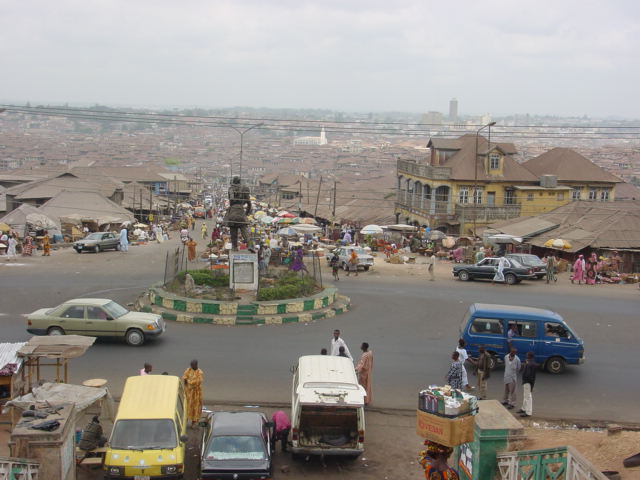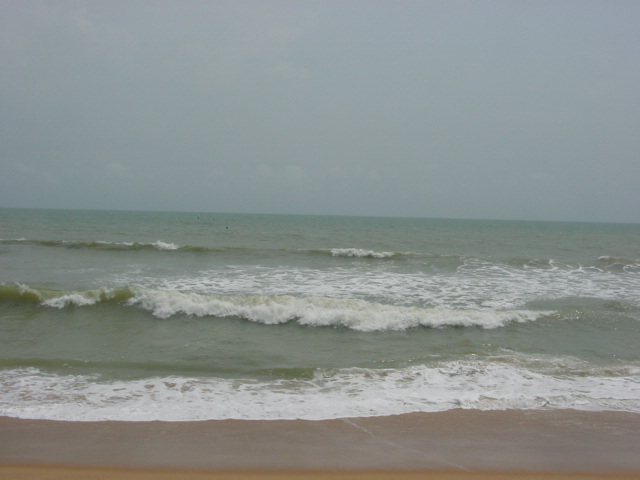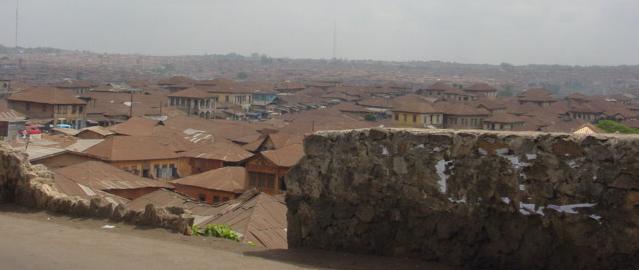FINDING ROOTS IN NIGERIA IBADAN
We got up in Lagos at 7 for our trip to Ibadan, 120 km away. It is the largest single city in Nigeria. Metropolitan Lagos is much bigger, but the city of Lagos, confined to Lagos Island, is not as populous as is Ibadan.
AS As we crossed this old, very African city, the views were arresting. Mile after mile of brown low-level tin rooftops. The whole city has a brown tinge to it. We went to the city hall and shot panoramic views.

Our principal guide in Ibadan was Kumi, who had worked as a cameraman with Lloyd and the other African Americans when they were in Nigeria. He is also a babalao, a spirit priest and he turned out to be the person I depended on a lot in Ibadan.
Olukunmi Egbalade
"Kumi"Ibadan has been his town and the only place he's lived his 39 years. And we saw how well he known as we rode around with him in his old Peugeot. With so many pedestrians crowded on the streets, whether he sees any hazard or not, he has a habit of honking his horn about every 10 seconds, just in case.
Ibadan Street
Our first day in Ibadan we went to the University to do an interview on the history of slavery among the Yoruba and we found one of the leading experts in the field. Professor Gabriel Oguntomisin.
Gabriel Oguntomisin
My questions to the professor sought to explore scenarios under which my male ancestor would have been captured here in Yoruba land and taken to America as a slave.
Professor Oguntomisin said many Yorubas were enslaved between the late 1700s and early to mid 1800s because of a civil war between the alaafin--the king and his top general:
Afonja, the generalissimo of that empire fell out with the alaafin and tried to carve out his own empire. He invited the muslim clerick Ali to aid him and he made Illoin the capital of his own empire. From Illorin, the Hausas joined him, to beat the northern part of the Yoruba empire. By 1826 o 1824 afonja had been killed. The war raged on until around 1835.
Oguntomisin said my ancestor could have been capture anywhered from 1790 on. He said both sides in this battle, the muslims and the Yorubas, did business with the Europeans on the coast 80 miles to the south.
Badagry Slave Jetty

Bight of Benin at Badagry(80 miles South of Ibadan)Both sides were selling capture slaves and the reason for this is not that they were interested in selling them for the sake of selling. They sold them in order to posses arms and ammunition to continue their war.
One Irony struck me that these people who came to be called Ford were possibly warriors on the African continent, captured and sold into slavery. Then some of their grandchildren became warriors on the American continent, fighting in the Civil War in a Colored Regiment to free the slaves from bondage.
Professor Oguntomisin and I continued our discussion of history with my telling him that it is important for us African Americans to learn our African origins because it fills out our history. Right now, our history in America begins with us being taken off a boat in chains as slaves. That is not much of a legacy. By learning of our particular African origins and how we were enslaved, that fills out the picture. Slavery was a point in our history, but it was not our entire history.
